Best
Lap Harp For Beginners
-
Overall: Range: 1st Octave G - 3rd Octave F
-
Best Feature: Small and lightweight
-
TedScore™: 9/10
Best
Pedal Harp For Beginners
-
Overall: Available in mahogany, walnut, and natural finishes, with customizable soundboards
-
Best Feature: Made with high quality materials
-
TedScore™: 9/10
Best
Electric Harp For Beginners
Silhouette Sleek, Modern Strings
-
Overall: Smaller sized harp with maximum range of string
-
Best Feature: Elegantly designed and offered in natural, mahogany, and ebony finishes
-
TedScore™: 8/10
Picture yourself walking through an enchanting forest, where the gentle sounds of harp strings weave a magical spell around the trees—that’s the captivating charm harps hold for me!
I’m excited to share about the different types of harps, a group of instruments that are as varied as they are fascinating.
As a harpist, I’ve loved exploring different types of harps, each with its unique sound and character.
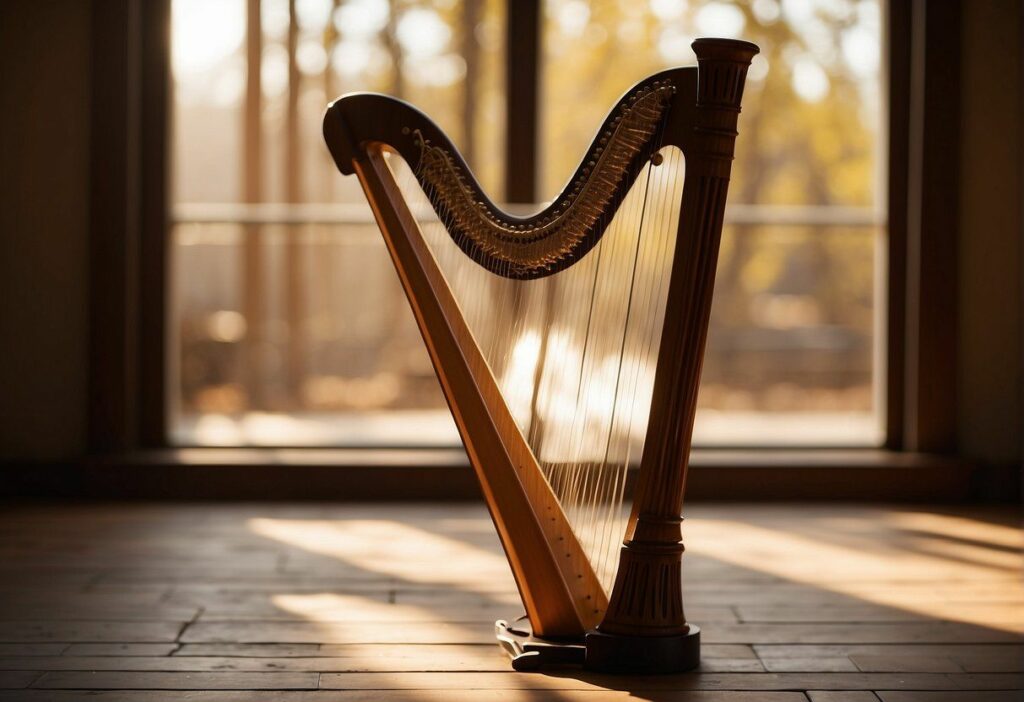
Each type creates its own musical masterpiece, from grand pedal harps in orchestras to portable lever harps for folk tunes.
In this article, we’ll explore the wonderful world of harps, discovering the enchanting sounds of their strings and the exciting history behind them. Let’s find out the magic of these captivating instruments together.
Anatomy of the Harp
As a lover of harp music, I’m always enchanted by the intricate anatomy that brings it to life. Let’s explore the mesmerizing world of the harp’s structure together.
Basic Components
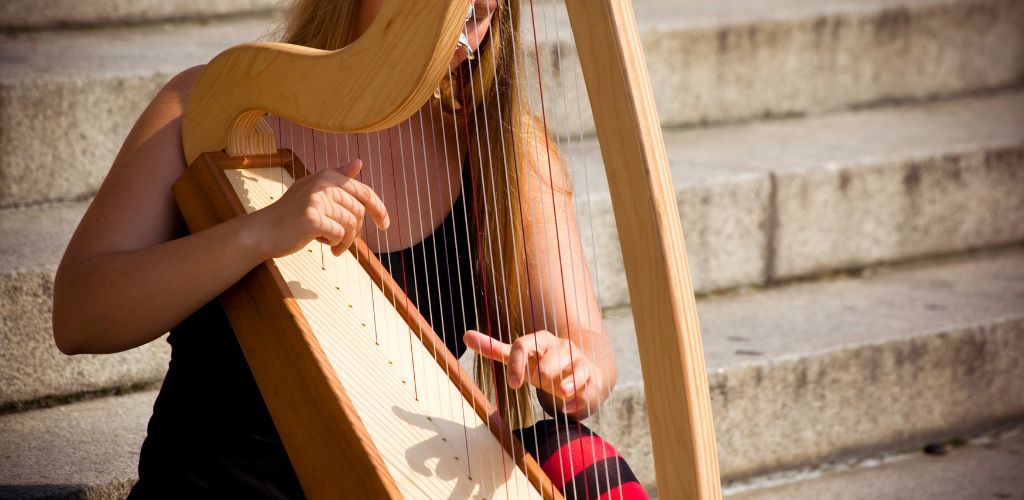
The harp is a beautiful stringed instrument with a triangular frame made of wood, creating a resonant sound box.
The neck and pillar support the strings, which are like a poet’s fingers, ready to tell stories through their expressive and diverse sounds. The bridge delicately supports the strings, ensuring that each pluck produces the right note.
String Materials and Tuning
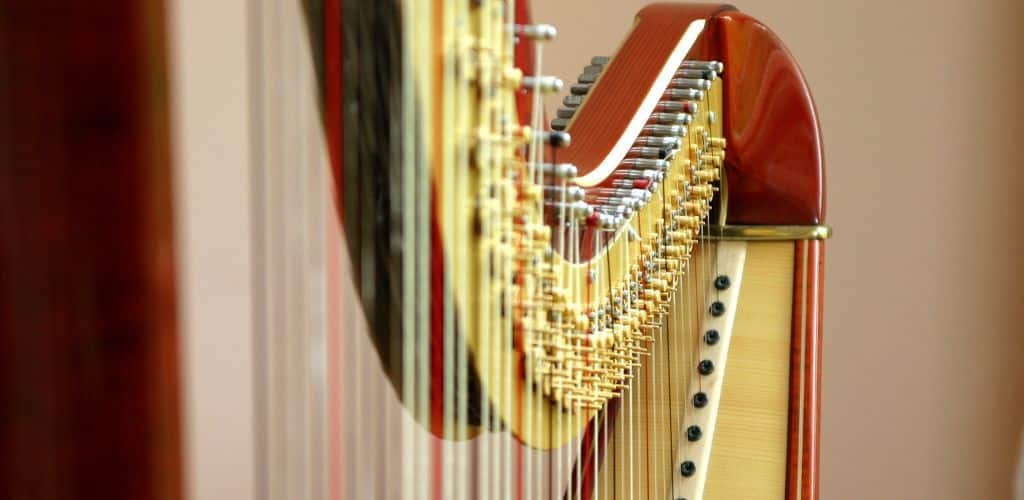
Let’s explore the different types of strings on the harp, some are made from nylon, known for their clear sound and durability.
On the other hand, Gut strings tell a tale of tradition, offering warm, rich tones that seem to echo through time. Wire strings are the way for a brighter and more metallic sound, creating a brilliant resonance.
Harp Types by Mechanism
Before we discuss the intricacies of different harps, it’s essential to understand that there are three main types categorized by their mechanisms: Lever Harps, Pedal Harps, and Electric Harps.
These mechanisms profoundly affect how the harp is played and what kind of music it can produce.
Lever Harps
With my Lever Harp, I’m always delighted by the charming click of the levers as I change pitches. These levers are positioned at the top of each string.
When I flick a lever, it shortens the string and raises the pitch by a semitone, which gives me those lovely, rich modulations in Celtic tunes and folk songs. Lever Harps are usually strung with nylon, gut, or wire, offering a variety of tones.
Pedal Harps
My Pedal Harp, also known as the concert harp, is the grand dame of the harp family. It uses pedals instead of levers to change pitches.
The base has seven pedals, each corresponding to a musical note that alters the string length.
Engaging a pedal can change the note’s pitch across all octaves, which allows me to play chromatic scales and complex pieces without missing a beat.
Electric Harps
Modern times have given rise to the Electric Harp, a thrilling innovation. They can be lever or pedal harps but with added electronic components.
By amplifying the sound electronically, I can experiment with various effects and play with a sound that fills large venues or connects seamlessly with recording equipment, making it a favorite for contemporary harpists who like to amplify their presence.
Other types of Harps
The wind harp, on the other hand, are unique instruments that produce sound when the wind passes through their strings, creating a serene and ethereal ambiance.
Chromatic harps, with their lever or pedal mechanisms, allow for quick and easy key changes during performances.

Choosing a Harp
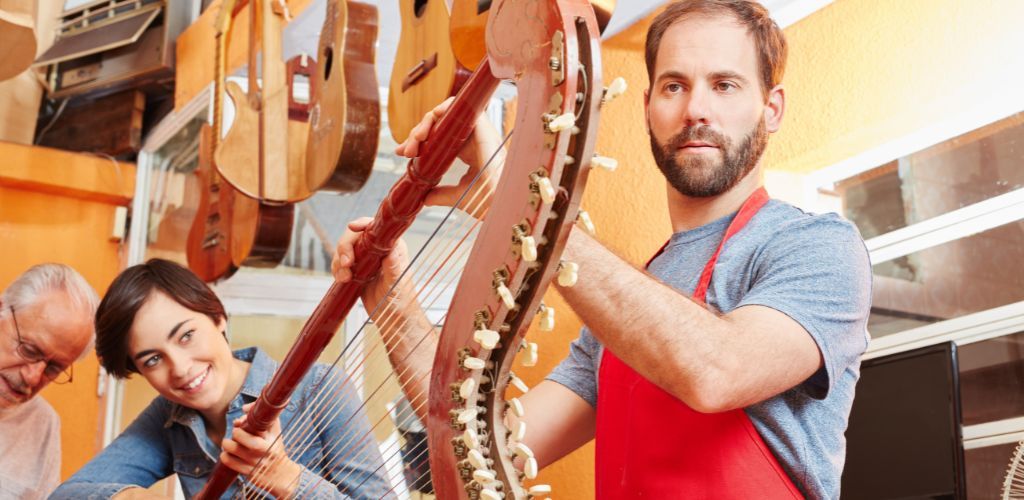
I always tell my friends that picking the perfect harp is like finding a new companion; you want one that sings to your heart and lifestyle. Let’s discuss what you need to know when selecting your musical mate.
Considerations by Use
When choosing a harp to play, my musical tastes and where I’d be performing would be essential factors. If you’re new to playing and want to perform folk songs in small venues, a lever harp might be your best choice.
If you’re considering joining an orchestra or playing classical music like Bach, you’ll need a pedal harp. These harps are the traditional choice for classical musicians, and they come with seven pedals to adjust flat and sharp notes as you play.
Physical and Financial Factors
- The lightweights of the harp family.
- Typically weighing between 12 and 40 pounds.
- Making them easier to transport from one gig to another.
Every budget has a harp, with lever harps ranging from $1,000 to $5,000 and pedal harps starting at around $10,000. The top-tier harps can cost up to $180,000, so it’s quite an investment!
Strings are another factor; they can be nylon, gut, or even wire, and each creates a distinct sound. A smaller harp with nylon strings might remind you of a quaint Paraguayan style.
Whatever you choose, be sure it’s a match for both your artistic aspirations and your wallet. It’s all about striking the right chord to make your musical journey as joyful as possible.
Regional and Folk Harps
I adore exploring regional and folk harps—they’re like unique stories woven into strings. These charming instruments vary vastly based on their cultural origins, each with its distinct features and histories.
Celtic Harps
I’ve always been fascinated by the Celtic harp, the Irish harp, or Clàrsach in Scottish Gaelic. It’s a symbol of Ireland that dates back to medieval times and remains hugely popular in Celtic music today.
The Neo-Celtic harp is a modern twist on the classic, with its design catering to contemporary musical demands. Some are equipped with sharp levers, allowing me to change keys swiftly, just like on a lever harp.

Non-Western Harps
The Paraguayan harp is a centerpiece in its national music, with a lighter construction and a bright, vibrant timbre. In Venezuela, similar folk harps add spice to the energetic joropo dance music.
The multi-course harp encompasses various non-Western designs, each with more than one row of strings. These fascinating harps require skillful hands, giving me a kaleidoscope of harmonic possibilities.
For example, African harps, such as the kora, boast up to 21 strings and sit comfortably in my lap as I pluck away to create a rich tapestry of sound.
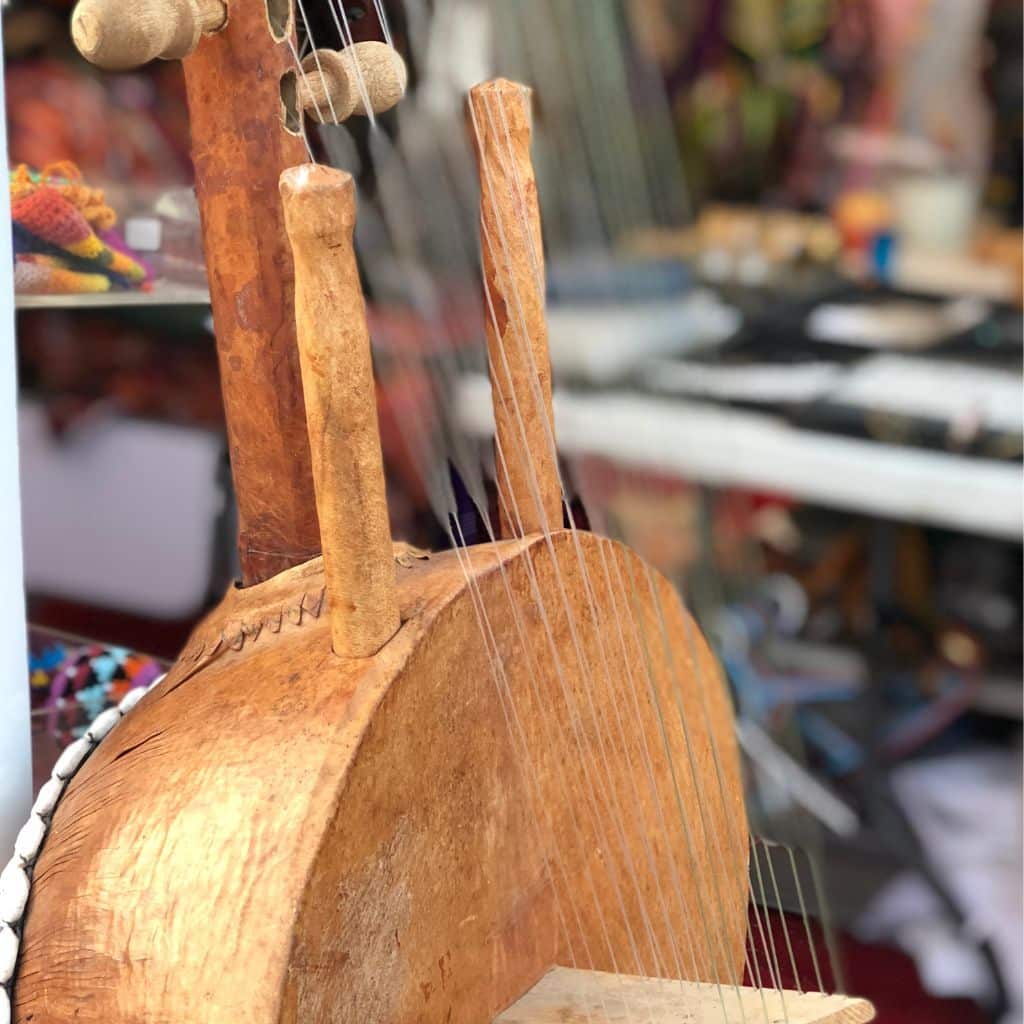
Historical Development of Harps

As I uncover the story of harps, we’ll be traveling through time from the earliest stringed instruments to the polished modern harp. We’ll see how cultures worldwide have shaped the harp’s journey.
Ancient Harps
My dear harp has ancient origins, with the earliest harps found in ancient Sumer and Egypt around 3000 BCE. These simple arched instruments show a love for music in early African and Asian civilizations.
Similar instruments like the chang in Persia and the lyre in ancient Greece were also popular, demonstrating the widespread appeal of harp-like instruments from Burma to India.
Medieval Development
In medieval Europe, the harp became very popular and came in many different designs, becoming a common instrument in quiet countryside and grand halls.
Harpists were very popular across Europe, playing enchanting melodies.
By the 12th century, Latin influences led to changes in the harp, making it sturdier and improving its range of sounds, setting the stage for many European harp styles.
Modern Transformations
Transcending into the modern era, the harp underwent a remarkable transformation. The introduction of pedal harps in the 17th century allowed for a new level of musical expression, a feat for the ears of all music enthusiasts.
This innovation heralded a shift that would see the harp step into the limelight of classical music with a newfound complexity.
Triple-strung harps emerged in Italy, taking things up a notch from their double-strung ancestors. They showcased how versatile and expressive a harp could be by enabling harpists to reach chromatic notes with a finger flick.
Harp for Beginners
19 String Harp with Levers by Gear4music
The 19 String Harp with Levers by Gear4music features a lightweight, portable design and high-quality levers for easy key changes, making it ideal for beginners and traveling musicians.
Its solid wood construction and nylon strings produce a warm, resonant tone, providing a satisfying playing experience.
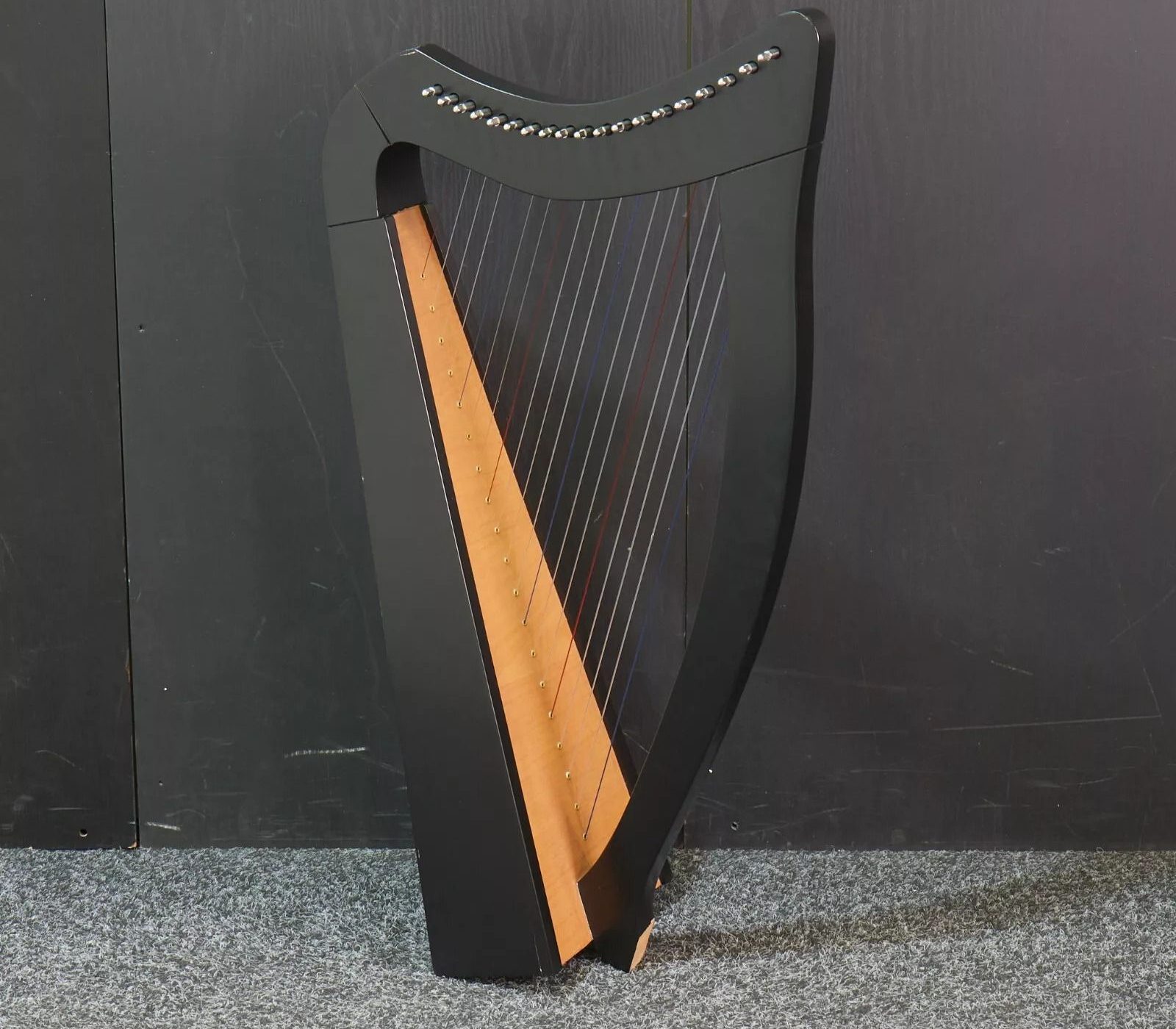
19 String Harp with Levers by Gear4music
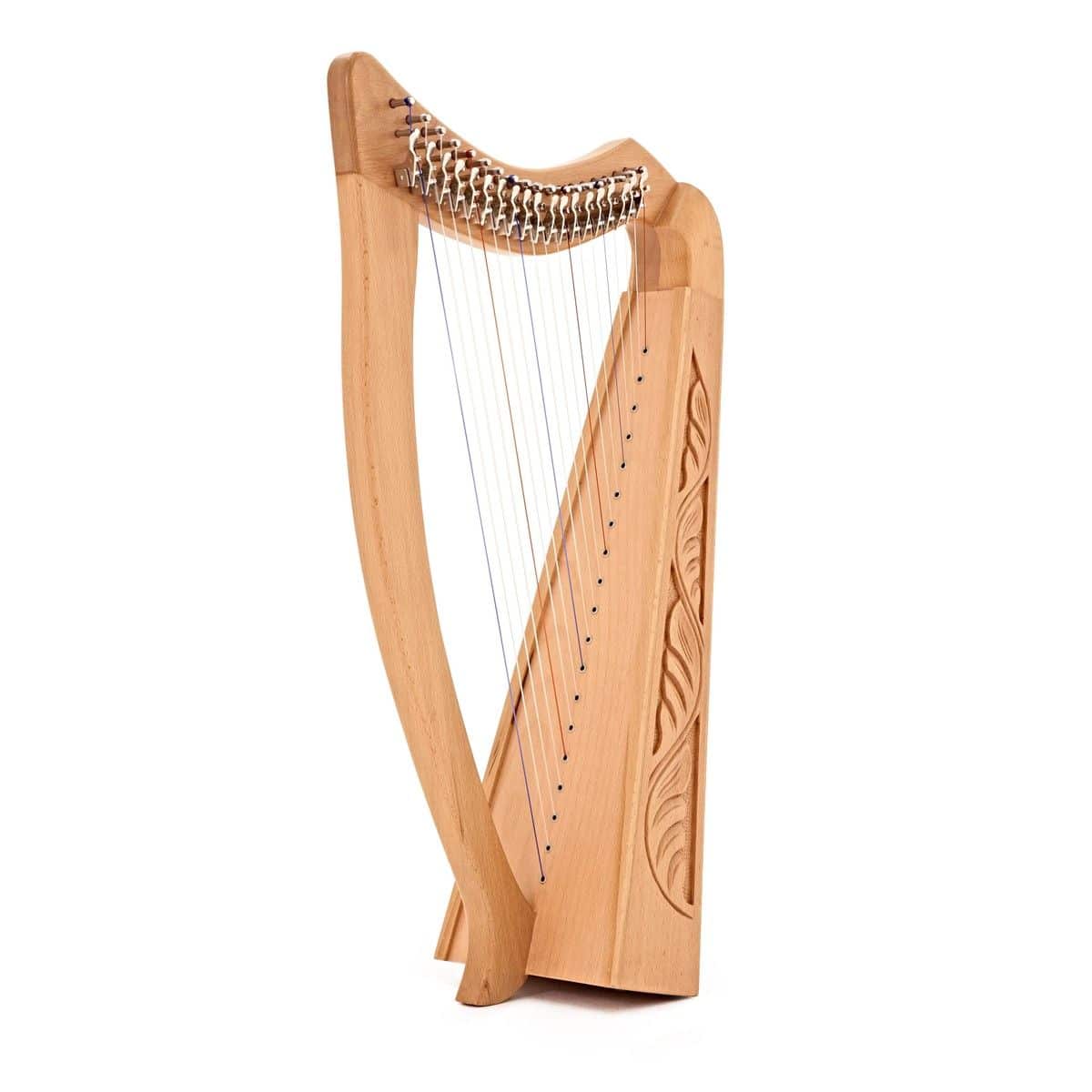
FEATURES: 19 strings for a wide range of musical possibilities
OTHER INFO: Range: 1st Octave G - 3rd Octave F
- Small and lightweight
- Affordable
- 19 strings are quite limiting when choosing music
When you click ‘Check Price’, you’ll see there are loads of great places to buy this item. Our personal favorite is Sweetwater for the US, and Thomann and Gear4Music for the UK & Europe.
They are the largest music retailers, with excellent customer service, competitive prices, really fast shipping, and the longest guarantees.
The professional musician who wrote this article combined many things,
from the product build, manufacturer’s reputation through to feedback
from other users, to create our famous TedScore™.
Salvi Daphne 47 SE
The Salvi Daphne 47 SE harp features 47 strings and a semi-grand size, offering a full, rich tonal range ideal for both students and professionals.
Its elegant design, combined with advanced lever mechanisms and superior craftsmanship, ensures excellent playability and durability.

Salvi-Daphne 47 SE

FEATURES: Available in mahogany, walnut, and natural finishes, with customizable soundboards
OTHER INFO: Made with high quality materials
- Key changes are easier than on lever harps
- Padded covers are not included in the price
When you click ‘Check Price’, you’ll see there are loads of great places to buy this item. Our personal favorite is Sweetwater for the US, and Thomann and Gear4Music for the UK & Europe.
They are the largest music retailers, with excellent customer service, competitive prices, really fast shipping, and the longest guarantees.
The professional musician who wrote this article combined many things,
from the product build, manufacturer’s reputation through to feedback
from other users, to create our famous TedScore™.
Lyon & Healy Silhouette
The Lyon & Healy Silhouette electric harp features a sleek, lightweight design with 34 strings and built-in pickups, delivering a versatile range of amplified tones perfect for modern and classical performances.
Its portability and advanced electronics make it an excellent choice for musicians seeking both mobility and high-quality sound.
Lyon & Healy Silhouette

FEATURES: Smaller sized harp with maximum range of string
OTHER INFO: Elegantly designed and offered in natural, mahogany, and ebony finishes
- Includes dust cover and tuning key
- Big jump in price from the student range
When you click ‘Check Price’, you’ll see there are loads of great places to buy this item. Our personal favorite is Sweetwater for the US, and Thomann and Gear4Music for the UK & Europe.
They are the largest music retailers, with excellent customer service, competitive prices, really fast shipping, and the longest guarantees.
The professional musician who wrote this article combined many things,
from the product build, manufacturer’s reputation through to feedback
from other users, to create our famous TedScore™.
Article-Title
Summary
In my journey through the enchanting world of harps, I’ve discovered a delightful variety of these graceful instruments. Each brings its unique charm to the musical landscape.
Pedal harps are known for their strong and rich sound, making them popular in orchestras.
Wire harps, with their delicate and melancholic sound, are beloved in Celtic music, offering a harp for every type of melody and musician.
Multi-course harps are intriguing due to their complex structure, making them appealing for experienced players.
Lever harps, with their simple sharpening levers, provide a balance of simplicity and adaptability, catering to both hobbyists and those mastering the instrument.
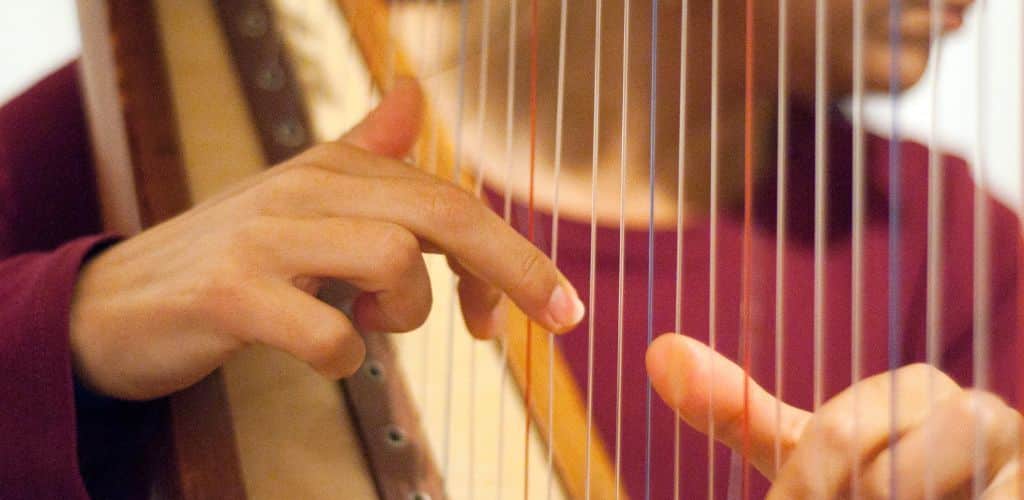
The sheer variety is what makes my heart sing. Whether it’s lap harps’ portability or concert harps’ imposing presence, each type resonates with a different part of my soul.
The world of harps is as rich and diverse as the music itself, and I’m thrilled by the endless possibilities each string holds.
Hold up, we’re not finished yet…
Discover the best harp for beginners to kickstart their musical journey.
FAQ's
There are several different types of harps, including pedal harps, lever harps, wire harps, and multi-course harps, each with its own unique characteristics and sound.
A tiny harp is commonly referred to as a lap harp or a miniature harp.
The most common type of harp is the lever harp, also known as the Celtic harp or folk harp.
Lever harps, also known as Celtic or folk harps, are often recommended for beginners due to their smaller size, lighter weight, and simpler mechanism for changing keys. These features make lever harps more accessible for those who are new to playing the harp.


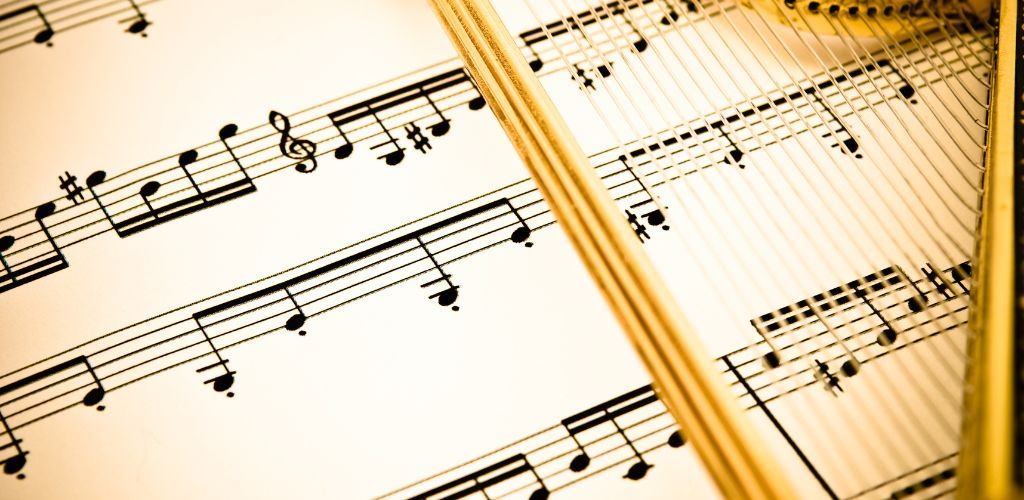







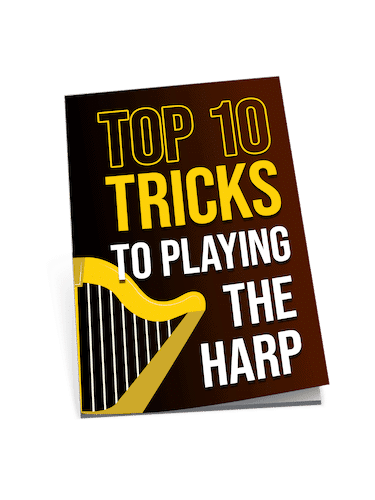
okay, so i gotta do this project on ancient musical instruments and thought the harp section would be easy but this article’s got like a million things about harps. ancient harps, medieval stuff, modern changes? i mean, its cool and all but im just tryna find some quick facts. anyone got a simpler summary? need to get this done before the weekend hits.
Fiddlesticks98, try looking into summaries online specifically aimed at students. They often distill the essence of these topics into more manageable content. Good luck with your project!
I appreciate the comprehensive overview provided on harps, especially the segment on choosing a harp based on physical and financial factors. As someone who had to navigate through the daunting process of selecting my first harp, I can attest to the importance of considering those aspects. Well-written and informative, especially for beginners in the harp community. Also, the inclusion of non-Western harps is a wonderful nod to the instrument’s diverse global presence. Great job, Bethan Semmens.
never knew there were so many types of harps out there. pedal harps sound complicated but cool, might try one if i can find a place that lets you test em. thx for the info Bethan Semmens.
Can anyone suggest which between the Salvi Daphne 47 SE and the Lyon & Healy Silhouette would be more suitable for beginners, especially younger learners? I’m trying to add more instruments to our school music program and thought harps might be intriguing for the kids. Thanks!
Would these be too pricey for a beginner?
LizaQuirks, for younger students, I’d recommend the Lyon & Healy Silhouette due to its durability and ease of play. It’s also visually appealing, which could motivate the kids more.